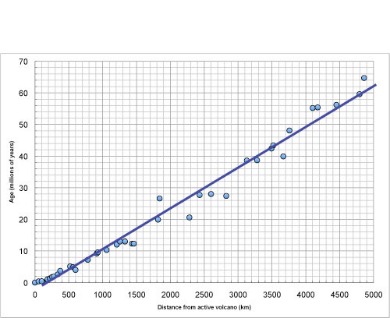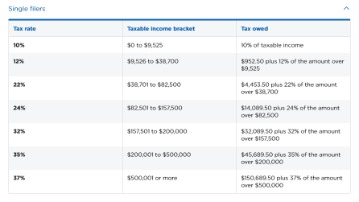
Generally, these periods differ due to businesses, vendors, and payable terms. However, the minimum period for DPO is 30 days (a month), lasting up to a maximum of 365 days (a year). Typically, to improve your DPO ratio, you must optimize your accounts payable first.

A high DPO is preferable from a working capital management point of view, as a company that takes a long time to pay its suppliers can continue to make use of its cash for a longer period. However, it may also be an indication that an organization is struggling to meet its obligations on time. Similarly, a very low DPO might seem ideal since it means your company pays its bills promptly. While this can foster good relationships with suppliers, it might also indicate that you’re not maximizing your cash efficiency. Quick payments can tie up cash that could otherwise be used for running daily operations or capitalizing on investment opportunities. For example, let’s say the Days Payable Outstanding industry average for retail is around 30 days, but for manufacturing, it’s 60 days.
Optimizing working capital for both buyers and suppliers
It means cash is in your corporate accounts for longer, which makes the list of assets on your balance sheets look more robust–a strategy that can help attract investors. Vendor relationships have become more important for organizations looking to scale their services. In fact, 71% of companies noted that their supplier relationships became more strategic over the past year.
- It’s usually compared to the average industry payment cycle, so you can see how aggressive or conservative your business is compared to your competitors.
- Days Inventory Outstanding (DIO) measures the average number of days a company takes before replacing its inventory.
- This measures how many days (on average) a company takes to pay its suppliers.
- However, a low DPO can put a strain on a company’s working capital, as it may need to pay its bills before it has received payment from its customers.
- Some vendors might refuse to work with you in the future if you pay late.
A high DPO indicates that the company is likely to have trouble paying its bills in the near future. Days Payable Outstanding (DPO) is an important working capital ratio that is used by the finance departments to calculate how long it takes a firm to pay its suppliers on average. In essence, managing DPO is a delicate act of juggling the benefits of holding onto cash with the need to maintain healthy supplier relationships and optimizing cash management. It’s about finding that sweet spot—a DPO that reflects strategic payment timing, balanced cash utilization, and sustainable supplier relationships. Moreover, some suppliers offer discounts for early payments, which you could miss out on if you take too long to pay. For instance, terms like ‘2/10, net 30″ mean that the supplier offers a 2% discount if the bill is paid within 10 days instead of the standard 30 days.
Days Payable Outstanding Calculator
To manage your small business cash flow, avoid a short days payable outstanding. If you pay invoices too quickly, you might not have enough cash on hand to cover other expenses. Your accounts payable process flow may be too rapid, and you could have to borrow money. Days payable outstanding (DPO) is a measure of a company’s liquidity that expresses the number of days it would take the company to pay its suppliers if it used all of its available cash to do so. It is calculated by dividing the average accounts payable balance by the company’s average daily sales.
HashiCorp Announces Second Quarter of Fiscal Year 2024 … – GlobeNewswire
HashiCorp Announces Second Quarter of Fiscal Year 2024 ….
Posted: Thu, 31 Aug 2023 20:05:00 GMT [source]
A good days payable outstanding is usually considered to be less than 90 days, although there are exceptions. If your company has a DPO of less than 90 days, it means that you sell your product and get paid quickly. It also means that you’re able to pay your suppliers on time and they’ll want to work with you in the future. The DPO is assessed in comparison with the DSO, but also taking into account the average payment period in the companies sector of activity. In order to make the best use of its cash flow, the company will try to base its DPO on the average DPO in the industry. The lower the number, the better it is for investors, since it means that the company has an ample amount of cash on hand and can pay its bills within a short period of time.
Example of Days Payable Outstanding
By understanding and managing your DPO wisely, you’re not just crunching numbers, you’re shaping your business’s financial future. Supplier relationships can have a significant impact on a company’s DPO. Strong supplier relationships how long should you keep tax records can result in more flexibility around payment terms and improved discounts for early or on-time payments. On the other hand, strained supplier relationships can result in longer payment cycles and ultimately lead to a higher DPO.
- Days payable outstanding (DPO) measures your business’s average payable period.
- A further consideration is that if a company has a high DPO, this will have a knock-on effect for the company’s suppliers.
- In other words, DPO means the average number of days a company takes to pay invoices from suppliers and vendors.
- A good days payable outstanding is usually considered to be less than 90 days, although there are exceptions.
- For instance, industries such as the retail sector might have a shorter DPO due to quick inventory turnover and traditionally shorter payment terms.
- In some sectors, vendors may offer early pay discounts, reduced rates for customers who pay their invoices prior to the original due date.
The formula can easily be changed for periods other than one year or 365 days. For instance, you can set the number of days for a month (30 days) or quarter (91 or 92 days). That means that the average accounts payable (A/P) and cost of goods sold (COGS) should also be measured over the same period. Accounts Payable is the total amount of money owed to suppliers and vendors for goods and services purchased on credit. Centralized data makes it easy and efficient to track days payable outstanding, days sales outstanding, and every other metric that impacts your business.
How do you calculate days payable outstanding?
Days payable outstanding (DPO), or accounts payable days, is a ratio that measures the average number of days it takes for a business to pay its invoices. However, since invoice payments are often tied to cash flow, DPO can also be thought of as a measure of how long a business holds onto its cash assets. DPO is an important metric because it provides valuable insights into a company’s cash flow management. By measuring the number of days it takes a company to pay its vendors, businesses can identify potential bottlenecks in their payment processes and develop strategies for optimizing their payments. Businesses with a high DPO can use this metric to demonstrate to investors and stakeholders that they are effectively managing their cash flow, minimizing costs, and maximizing profitability. This measures how many days (on average) a company takes to pay its suppliers.
Days payable outstanding (DPO) is a useful working capital ratio used in finance departments that measures how many days, on average, it takes a company to pay its suppliers. As such, DPO is an important consideration when it comes to managing a company’s accounts payable – in other words, the amount owed to creditors and suppliers. Days Payable Outstanding (DPO) is an important financial metric that can provide valuable insights into a company’s cash flow management and vendor relationships. By understanding how to calculate DPO, optimizing payment processing, and leveraging technology solutions, businesses can improve their DPO, optimize cash flow, and improve profitability.
Why Should You Care About Days Payable Outstanding?
Every business engages in the balancing act of taking in revenue and paying the bills. As mentioned in an earlier section, accounts payable (A/P) can alternatively be projected using a percentage of revenue. DPO can be calculated by dividing the $30mm in A/P by the $100mm in COGS and then multiplying by 365 days, which gets us 110 for DPO. To start our forecast of accounts payable, the first step is to calculate the historical DPO for 2020. An example of a company with high bargaining leverage over its suppliers is Apple (AAPL).
X Financial Reports Second Quarter 2023 Unaudited Financial … – TechNode Global
X Financial Reports Second Quarter 2023 Unaudited Financial ….
Posted: Mon, 28 Aug 2023 21:55:39 GMT [source]
They can be calculated for any time period, but most often on a 365-day basis. The cash conversion cycle is one of the key financial indicators of your company’s operational efficiency. Using the 110 DPO assumption, the formula for projecting accounts payable is DPO divided by 365 days and then multiplied by COGS. In reality, the DPO of companies tends to gradually increase as the company gains more credibility with its suppliers, grows in scale, and builds closer relationships with its suppliers. During that stretch of time when the supplier awaits the payment, the cash remains in the hands of the buyer with no restrictions on how it can be spent. GoCardless helps you automate payment collection, cutting down on the amount of admin your team needs to deal with when chasing invoices.
Days Payable Outstanding Example
The larger the days payable outstanding, the longer it takes you to pay debts. If a company has more than 100 days of payables outstanding, it indicates that there might be an issue with cash flow. On the other hand, if the company has less than 90 days, then it should have no problem paying off its bills in time. DPO is an important financial ratio that investors look at to gauge the operational efficiency of a company. A higher DPO means that the company is taking longer to pay its vendors and suppliers than a company with a smaller DPO. Companies with high DPOs have advantages because they are more liquid than companies with smaller DPOs and can use their cash for short-term investments.
